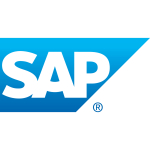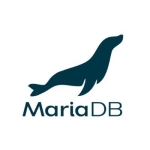What is most valuable?
SQL Server integration services tools
Data quality services tools
Master data services tools
SQL Server reporting services tools
Data partitioning (horizontal partitioning) tools
ColumnStore indexes
In-memory OLTP tables
How has it helped my organization?
We design and implement data warehouse solutions with SQL Server 2016 Developer Edition tools. This solution has:
Given us high levels of productivity
Allowed us to use an agile approach to the design and implementation of data warehouse solutions for our customers
Given us a competitive advantage in our market
What needs improvement?
We do not have much to complain about SQL Server 2016 Developer Edition in itself.
We do have some complaints regarding licensing. In an emerging market like Argentina, it is very steep for our customers to pay USD 28,000 or more on licensing for an instance of SQL Server 2016 Enterprise Edition. This poses a limiting factor to our growth.
For how long have I used the solution?
We have been using SQL Server 2016 Developer Edition for a few months so far. We have been using the previous version (SQL Server 2014 Developer Edition) for more than two years.
What was my experience with deployment of the solution?
We did not encounter any deployment issues.
What do I think about the stability of the solution?
We did not encounter any stability issues.
What do I think about the scalability of the solution?
We did not encounter any scalability issues. This is the case even though the Developers Edition does not offer the same level of performance and scalability that the equivalent Enterprise Edition offers.
How are customer service and technical support?
Customer Service:
As usual, Microsoft offers very good customer service. The amount of resources (self-study materials, online courses, and tutorials) is huge and most of it is free. Paid customer service is also very good.
Technical Support:
Paid technical support is very good and efficient.
Which solution did I use previously and why did I switch?
I have used data warehouse tools from Microsoft since SQL Server 2000.
How was the initial setup?
If you do the proper training prior to the setup, there will be no issues. However, the learning curve is wide and tall.
You could get started fast and sure if you stick to the many wizards included with the tools. However, the scope of those said wizards is limited.
What about the implementation team?
We implemented with an in-house team only, with proper, prior training that was also done in-house.
What was our ROI?
Since SQL Server 2014 Developer Edition, Microsoft has been offering these tools free of charge. The ROI is mainly focused around training investment. We do the training in-house, so the ROI is around one year.
What's my experience with pricing, setup cost, and licensing?
We have no issues with pricing and licensing for SQL Server 2016 Developer Edition, as it is free of charge. The thorny issue is with pricing and licensing with customers.
We do our best to design data warehouse solutions that can cover requirements from our customers within the capabilities of SQL Server 2016 Standard Edition.
Which other solutions did I evaluate?
The cost-benefit ratio offered by Microsoft's data warehouse solutions is, by a long shot, much more convenient for our customers, small and medium sized companies, than solutions from other vendors.
What other advice do I have?
My advice is focused on companies that develop and offer data warehouse solutions for customers that use SQL Server. Consider the ROI, which is mostly training investment (for the Developer Edition). If training is not done in-house, only hire training from an official Microsoft training center in your region. Look for the best training center. Once you are done with the training, you can start taking customers for data warehouse projects.
Disclosure: My company does not have a business relationship with this vendor other than being a customer.

















I agree with the fact that the inclusion of AlwayOn tools (since SQL Server 2012) has somehow simplified the configuration of High Availability (HA) settings in SQL Server, in this sense, the HA part in HADR (High Availability - Disaster Recovery) is a little bit simpler than with previous versions of SQL Server.
But we have to realize that when you include an HA solution to an instance of SQL Server, you should previously conduct a proper analysis on HADR for said instance, and that analysis is more complex than a (simpler) Disaster Recovery Plan.
It will take more time to complete a proper HADR Plan for your instances at your site, once you have your HADR Plan approved, you have to design and plan the detailed implementation of said plan.
But then again, AlwaysOn simplifies the config of HA in SQL Server, and said AlwaysOn (HA) solutions in SQL Server are a great complementary solution to a DR solution in SQL Server, in particular, if you combine Failover Clustering and Automatic Failover DB Mirroring with a DR solution for a given database in a given instance, instance that is covered by Clustering.
Kind regards, GEN